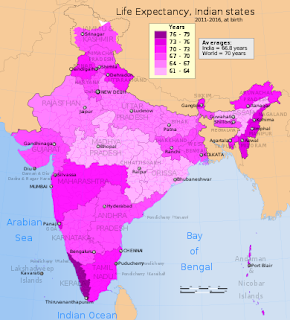5 Reasons of Poverty in India
Poverty in India has always been a matter of grave concern. It is one of the major issues that the country has been dealing with since independence. Despite several efforts by the government and various non-governmental organizations, poverty still remains a significant challenge for the country. In this blog, we will discuss the causes, effects, and possible solutions to poverty in India.
Causes of Poverty in India:
1. Overpopulation: India is the second most populated country in the world with a population of over 1.3 billion. The huge population puts a significant strain on resources, making it difficult for the government to allocate resources to everyone.
2. Unemployment: Lack of employment opportunities is another significant cause of poverty in India. Despite having a large workforce, the Indian job market is not growing fast enough to create enough jobs for everyone. This leads to underemployment, which in turn leads to low wages that are insufficient to cater for the basic needs of individuals.
3. Inadequate Education: Education plays a vital role in reducing poverty. However, a large majority of the Indian population does not have access to quality education. This results in economic and social growth barriers.
4. Poor Infrastructure and Improper Resource Allocation: Inadequate infrastructure facilities like poor roads, public transportation, water supply, and sanitation lead to poverty in India. The government needs to allocate resources correctly to avoid a widespread of poverty.
5. Caste System: Though the Indian constitution abolished the caste system, it still exists, and it affects people's opportunities and access to resources.
Effects of Poverty in India:
1. Health Issues: Poverty leads to bad health conditions as many people lack access to adequate healthcare facilities, sanitation, hygiene, and clean drinking water. They cannot afford nutritious diets.
2. Crime: Poverty leads to an increase in crime rates as people turn to illegal means to earn a living.
3. Malnutrition in Children: Poverty leads to malnutrition and undernourishment in children, which affects their growth and development.
4. Low Life Expectancy: Poverty hinders people's access to good healthcare facilities, causing a decrease in life expectancy.
5. Poor Living Conditions: People living in poverty often live in poor conditions characterized by overcrowding, inadequate sanitation, and poor living conditions.
Possible Solutions:
1. Education and Skill Development: The Indian government should focus on providing quality education and training programs to the citizens.
2. Employment Generation: The government should encourage private investments and create more job opportunities for the citizens.
3. Enhancing Proper Resource Allocation: Improve infrastructure facilities and ensure appropriate allocation of resources.
4. Poverty Alleviation Programs: The government and different NGOs should focus on implementing poverty alleviation programs that target individuals living in poverty.
5. Health Care Facilities: The government should prioritize healthcare facilities and provide adequate health facilities to all citizens.
Conclusion:
In conclusion, the problem of poverty in India is a complex issue that needs all stakeholders to work together in finding sustainable solutions. It's our collective responsibility to support those in need and provide them with basic needs. As Mahatma Gandhi said, "Poverty is the worst form of violence." Let's work to eradicate it.


.jpeg)

Comments
Post a Comment